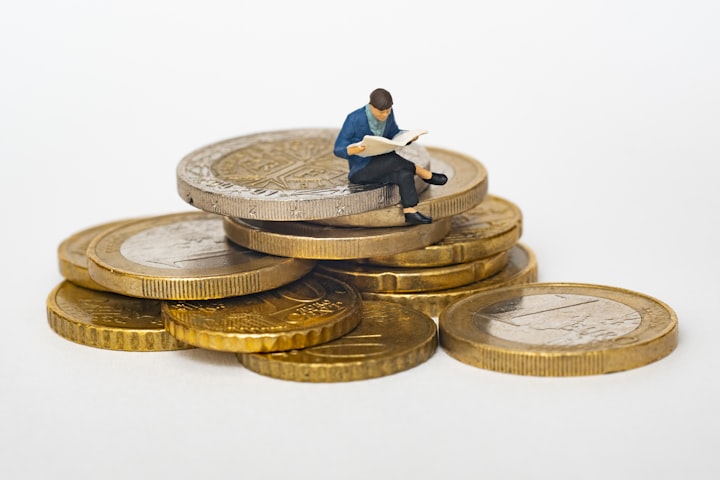Advertising and Marketing: A multi-billion dollar industry
Psychological tricks to get the attention of people

Let’s say we are watching news on our TV or watching an interesting video on YouTube or enjoying a thriller drama ; at the very moment of suspense , something pops out on the screen. It’s an ad !! Now this is a very disgusting moment, right? We all have faced that more or less. But do you know that this little disturbing thing has an industry worth of multi-billion dollar? Sounds cool, huh? Let’s dig into deeper.
The advertising industry is a global, multibillion-dollar business that serves as a conduit between manufacturers and consumers. The research group eMarkerter reported that total media advertising spending globally was nearly $629 billion in 2018, with about 44 percent of that spending in digital advertising. There are more than 71,555 advertising businesses in the United States, employing more than 264,021 workers. In the present era, every company spends a significant part of their budget in advertisement and marketing.
Advertising and marketing is all about grabbing the attention of people in the shortest possible time. Marketing psychology attempts to understand the way that consumers think, feel, reason, and make decisions. The goal of marketing is to convince people to buy your products. If you read a long list of pros and cons of your product in front of your audience, definitely none is going to pay heed to it as everyone is busy. So advertisers target to some specific psychological factors to get the attention of the people and nclude those in their marketing policies. Today I’m going to discuss some prominent advertising and marketing policies used by many big companies and those are really worth it!
Decoy Effect:
Let’s say you are buying an ice cream. You can buy either a small cone of $2 or large cone of $8. Now the companies know that most of the people will buy the smaller one because $8 is way more expensive. So they use the decoy effect. They bring another medium cone of $7. But they don’t want you to buy that. This third option works as a decoy. It’s only there to make you feel that the large one is the better option as it’s a matter of only $1. Without the decoy you are comparing $8 cone with $2. But with the third option, your attention is only on $7 cone and $8 cone. So definitely people will choose the larger one.

The framing effect:
It’s not what you say, but how you say it. You must have heard many ads saying “8 out of 10 dentists recommended this or that “ . But if I say “2 out of 10 didn’t recommended.” It’s the same thing, right? But companies don’t use the second one. But why? Because it has a negative impact on our brain though it is depicting the same thing as the first line.
Fear of missing out effect:
Nielsen conducted a study and found that 83% of consumers trust recommendations from friends and family. If you want to capitalize on that statistic, introduce testimonials and reviews to your site, as well as social sharing buttons. Social proof has been covered at length, but it's one of the most powerful ways to influence a psyche. It touches the part of us that demands to be included. One of the most effective methods it does this is through the Fear of Missing Out (FOMO) effect.
Humans don't want to be absent from the rewarding experiences they see others having. It builds into subconscious anxiety that plagues them until they join in.

Mere Exposure theory:
Mere Exposure Theory explains why people develop preferences based on their familiarity with something.
An interesting study from 1992 explored the theory by have four women of similar appearance attend a college class. One woman didn't attend at all, one went five times, one for ten, and the last for 15. At the end of the course, the professor had his students rate the women on different variables. The woman who'd attended 15 times saw the best numbers, the woman who'd been there ten times seeing the next, and so on.
Getting more exposure will increase the likelihood someone associates with your brand, just because they've seen it more than others. One will choose the brand while buying something which he has seen most of the time either on ads or any places.
The paste tube trick:
Once a toothpaste selling company was facing loss in their selling. So the manager approached to an experienced person. So he gave suggestion that you may increase the radius of the mouth of the tube. Soon after hearing this the manager laughed out. He said “What’s the relation of the radius of the tube mouth and my selling? Are you kidding?”
Then the experienced man said, “Listen up. Every morning people wake up and brush their teeth. More or less they give same pressure on the tube as they are sleepy. So if you increase the radius then more paste will come out with the same amount of pressure. So the paste will end up soon. And people will buy more toothpaste in the same month.” And that’s the psychology behind it.
The Bottle-cap business:
Let’s say you are a manager of a soft drink company. So if I ask you what change you can do to the bottle to increase the consumption of the soft drink. Then you may come up with the idea that what if we make the mouth of the bottle bigger. Then automatically more consumption will happen. Again you can say we can do the opposite by reducing the mouth size and thus the production cost will lessen down. But I have a better idea and this is a passive idea as it’s connected to psychology.
We take two bottles one with bigger mouth and another with smaller mouth but both of them have same amount of drink. Now the bottle with the bigger mouth will be finished earlier and people might think I didn’t enjoy the drink ; it finished quickly. But to consume the same amount of drink with smaller mouth I have to take more sips and I can enjoy the drink for longer period of time. Like this way, without changing the amount of drink we have pushed the idea in the head of people that they are enjoying the drink with smaller mouth just only for being able to take more sips. Therefore people will buy the drink more and more.
The Jam Experiment and recommendation system:
Once two psychologists; Sheena Lyenger from Columbia University and Mark Lepper from Stanford University decided to do a field research on a psychology theory of that time which is ‘a positive effect is noticed in the choosing process of a person if he have more choices.’
They made a stall in front of a grocery store and brought 24 types of jam bottle. Many people came to the stall, some of them tasted and some of them even bought. The next day they again made a stall but this time they placed only 6 jars.
So after the experiment they fond out that more people came on the first day but only 3% of them bought. On the other hand less people came on the 2nd day but 30% of them bought jam. So the sell increased to 10 times.
It is understood from the experiment that more choices may seem attractive but it throws us into dilemma. And that’s when recommendation system comes handy. Google, Facebook, YouTube, Amazon and many other companies use the recommendation system and build up an interactive relationship with the customers. They suggest you the best platforms of your choice. They will give you resource from a place which you never thought about. Therefore you remain engaged with them. That’s how marketing works.
Conclusion
There are many other marketing tricks. Newer tricks are very useful when you are in a competitive market place. Humans are generally wired the same, and that gives you a specific advantage in your marketing. So long as you're not using them unethically, these psychological factors can add an edge to your strategy and help you stand apart from the competition.
About the Creator
Tanvir Rashik Shafim
I'm an enthusiastic writer and want to make sure that people can experience life in all of its forms through writing | Writes about Philosophy, Geopolitics, Tech, Psychology and more.






Comments (1)
When researching in the field of adtech companies, I've studied a lot of information. They all offer in-depth solutions for advertisers and publishers. I would recommend checking out https://www.oxagile.com/article/top-adtech-companies-to-watch-in-2022/ as one of the fastest-growing AdTech companies. It provides DSP, SSP, White Label DSP, SSP, Ad Exchange and DMP. Highlights include reliability, affordability, and innovative ad formats.